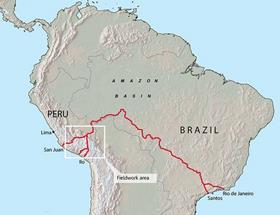
Exporters in Peru’s Arequipa region are being urged to take advantage of the Interoceanic Highway to access the Brazilian market. At a recent workshop organised by the Ministry of Foreign Trade and Tourism (Mincetur), minister Magali Silva Velarde-Alvarez said the corridor offered cost and time advantages, helping to improve the competitiveness of Peruvian products in the Brazilian market.
The 2,600km highway links the Peruvian ports of San Juan de Marcona, Matarani and Ilo to Brazilian ports and cities in the Rio Branco Special Export Zone.
The workshop was attended by 55 exporters, importers and other players in the supply chain. “At present, 88 per cent of Peruvian exports to Brazil are carried by sea via the Panama Canal,” Silva said. “The journey to the port of Santos in São Paulo, including customs clearance, can take up to 50 days, whereas if exports travel by land via the South Interoceanic Highway the journey time can be shorted to 14 days.”
During the event, participants learnt about customs procedures, phytosanitary, logistics and other issues via a series of presentations given by specialists from Mincetur, the Ministry of Transport and Communications and national plant health service Senasa.
Silva noted that in 2014 Peruvian exports from Arequipa to Brazil through the Interoceanic Highway totalled US$4.1m. Table grapes, tomatoes, onions and carrots are amongst the key products exported. Delegates heard how the highway also has the capacity to increase transpacific trade by boosting the Peruvian port of Matarani’s role as a logistics hub serving the South America region. To this end, Mincetur announced that it will conduct a logistics mission to Río Branco in the state of Acre in July in parallel with the Expo Acre trade fair.



